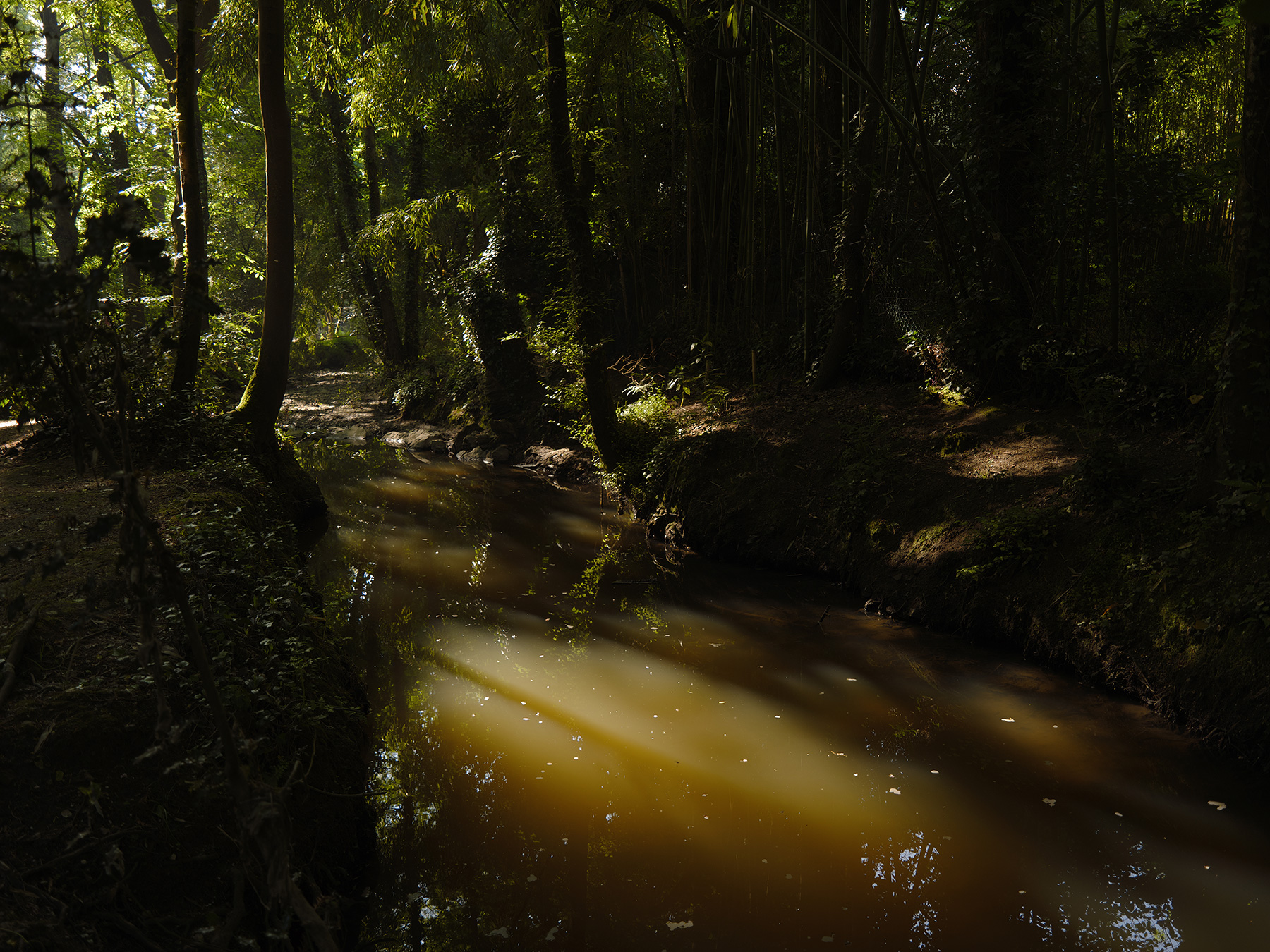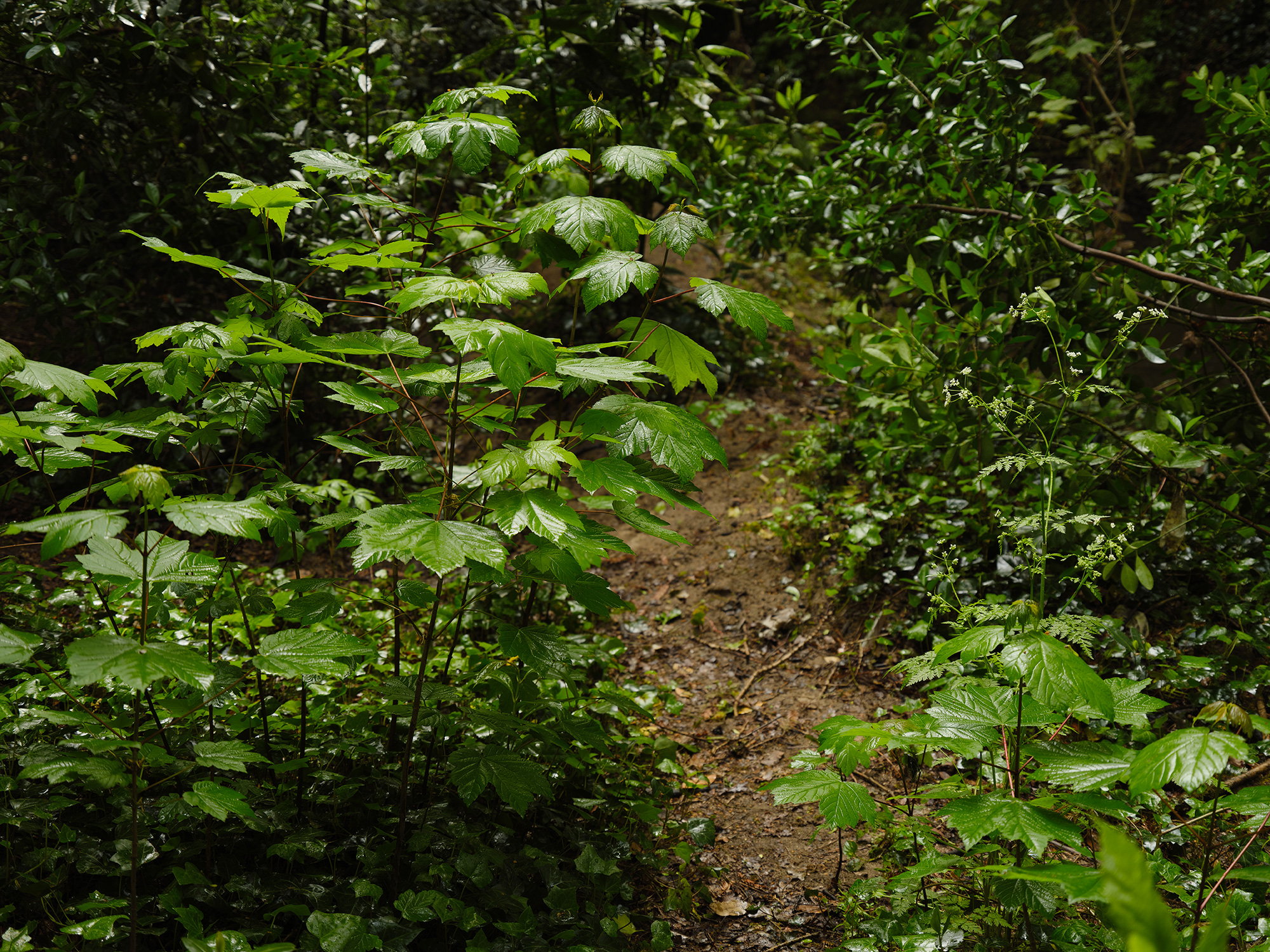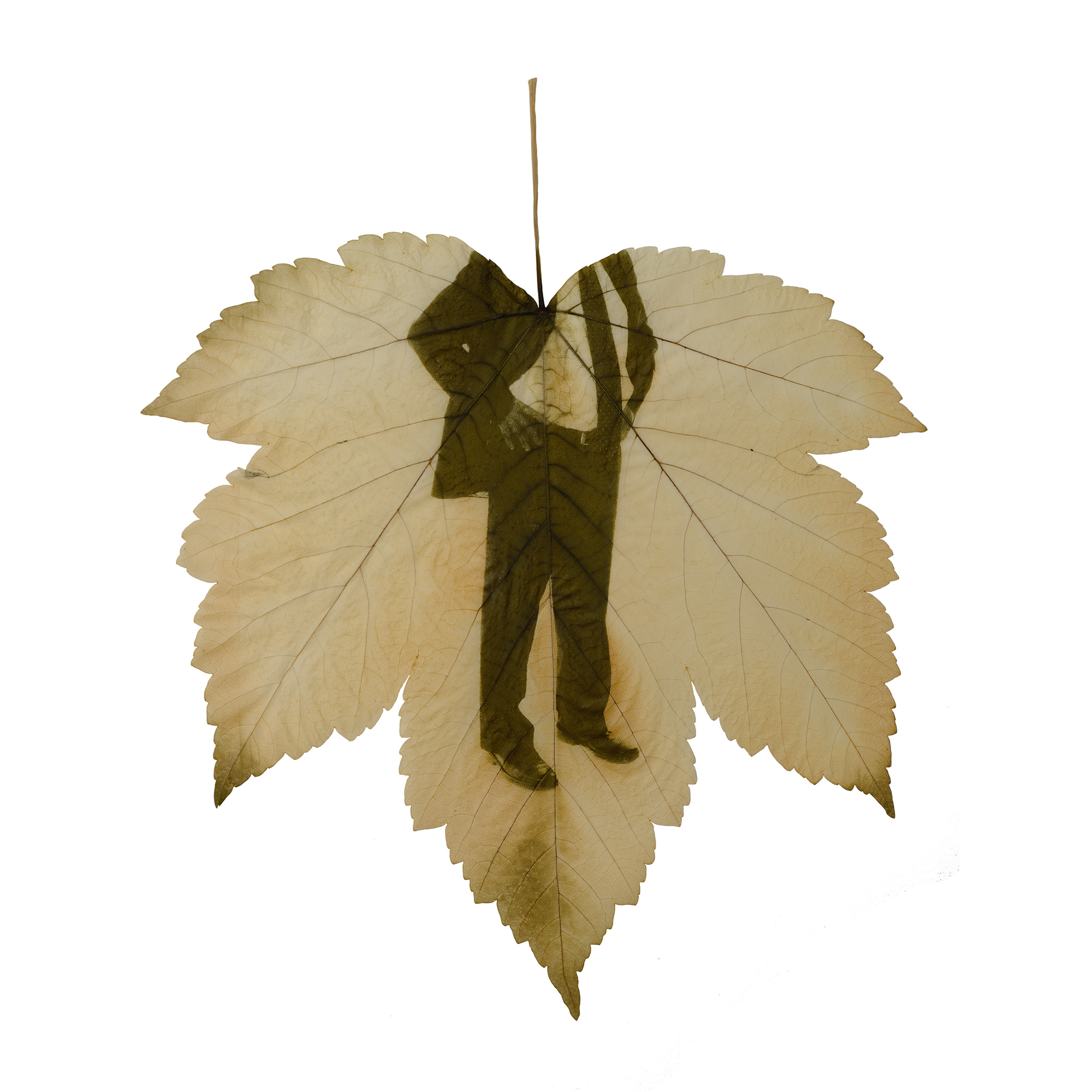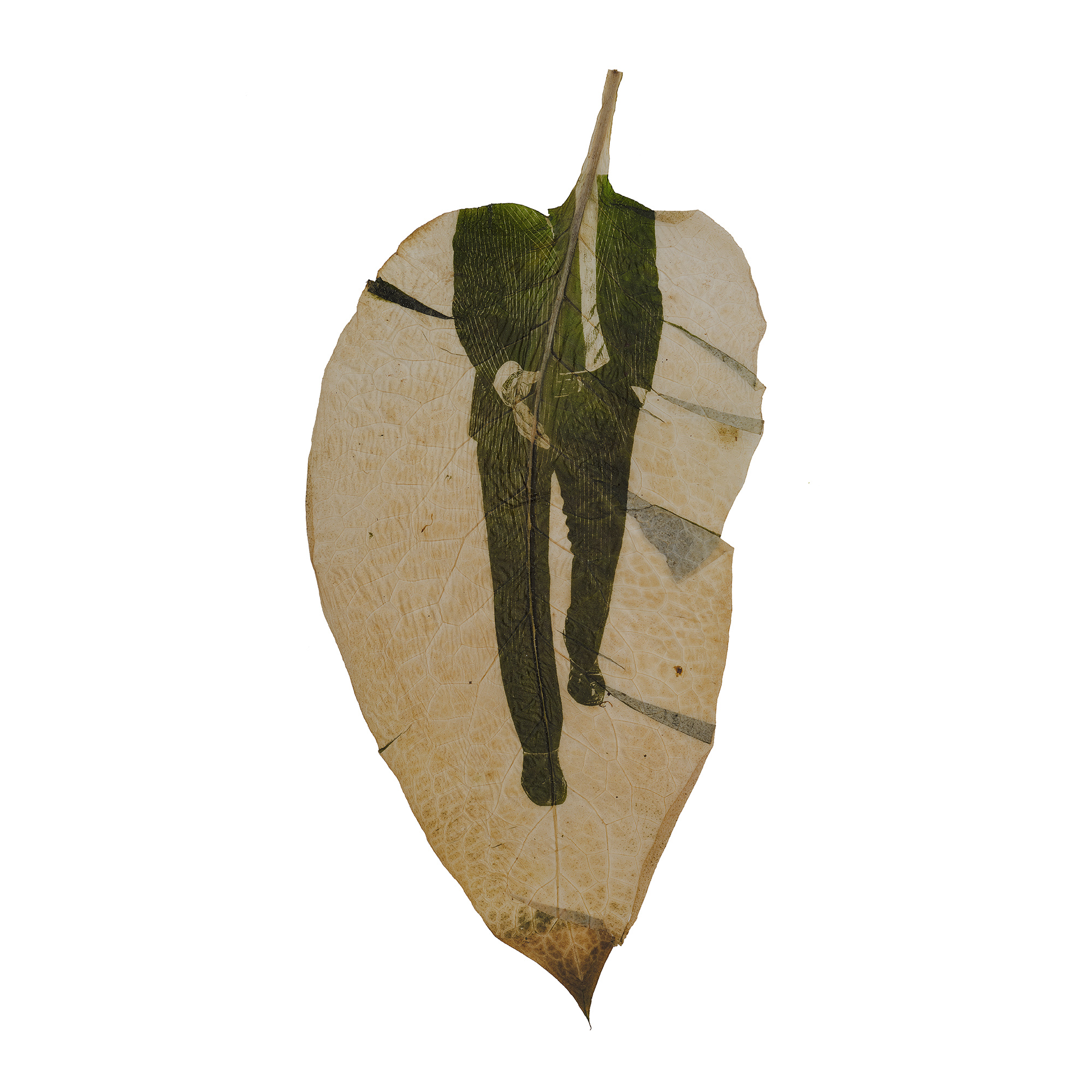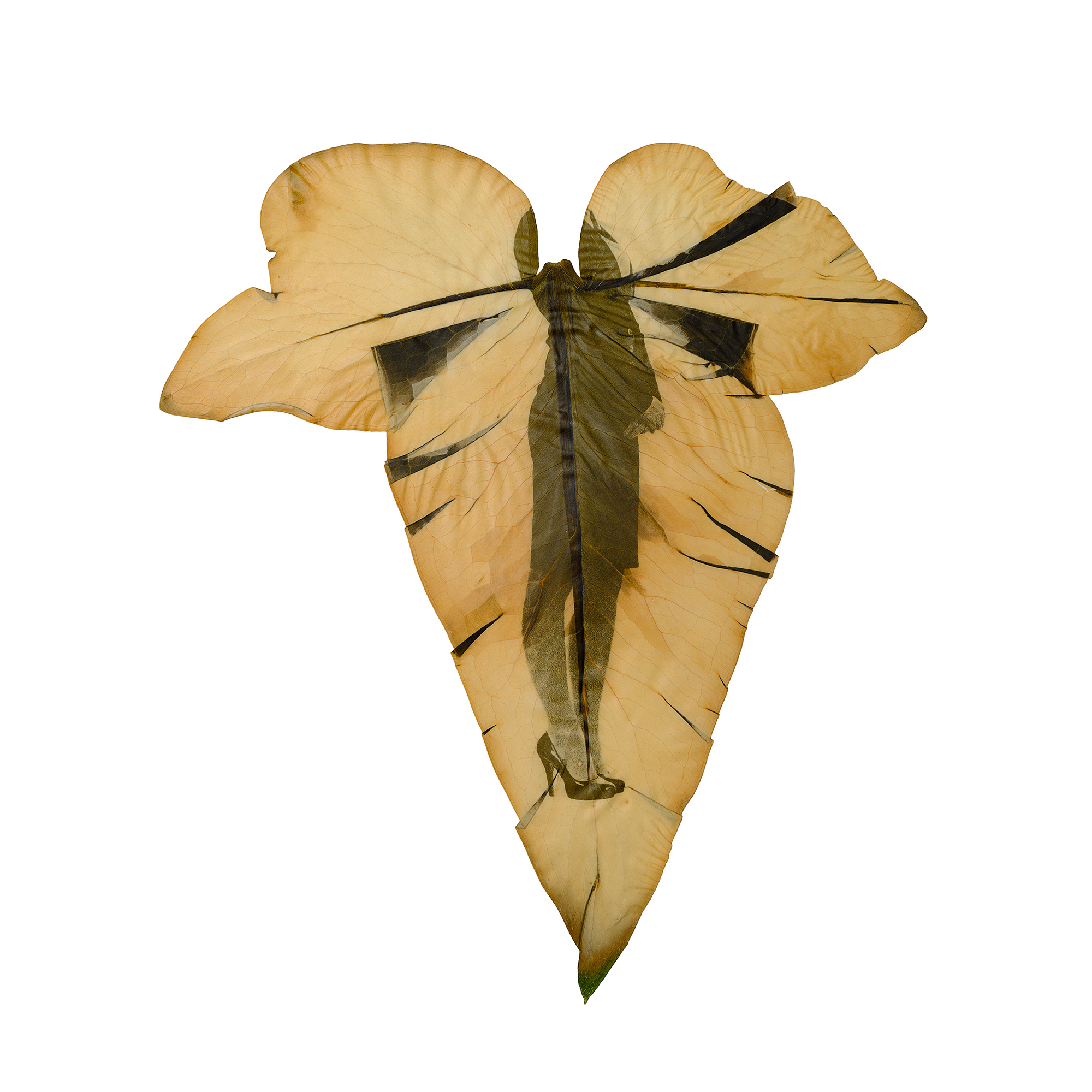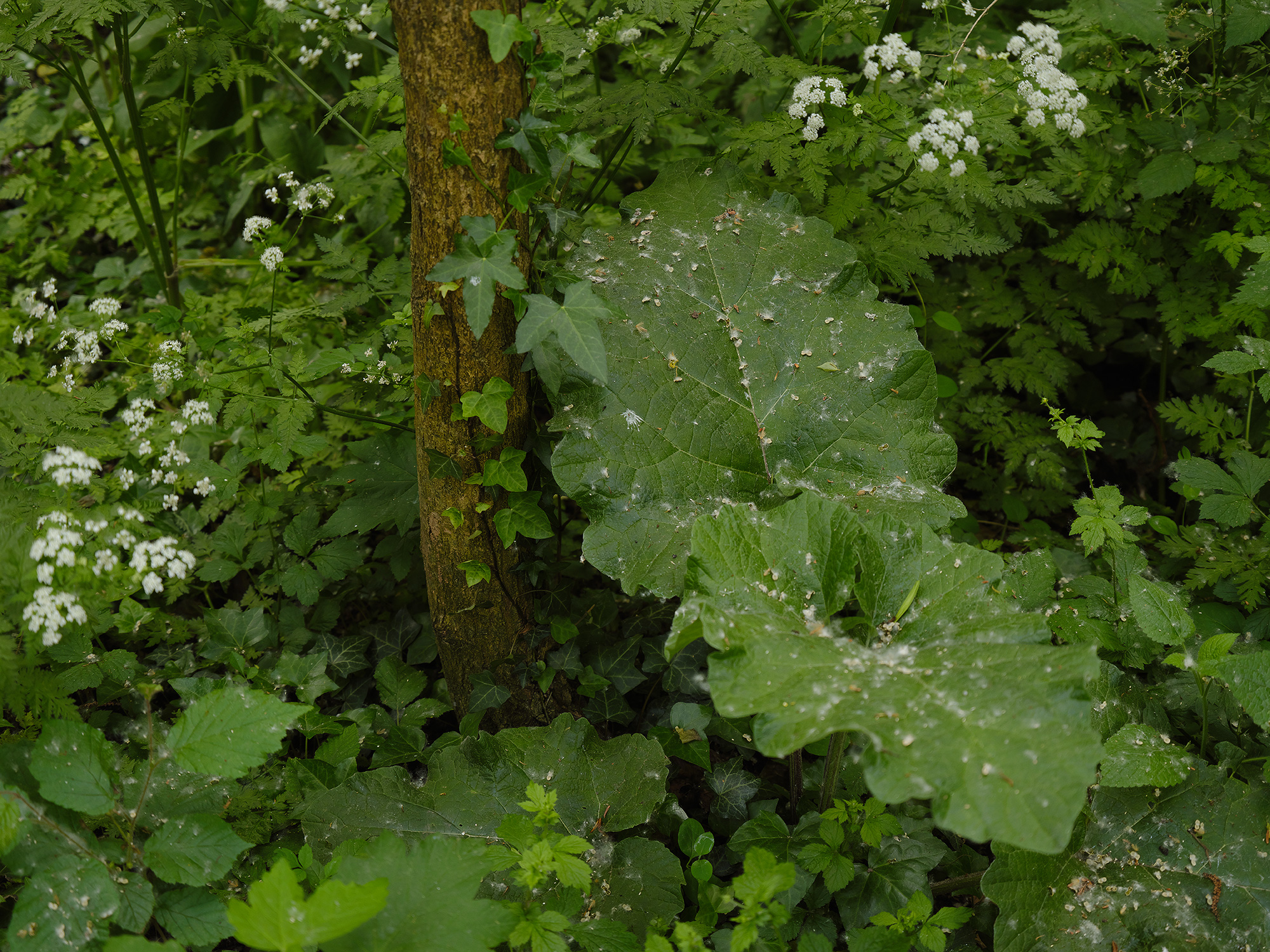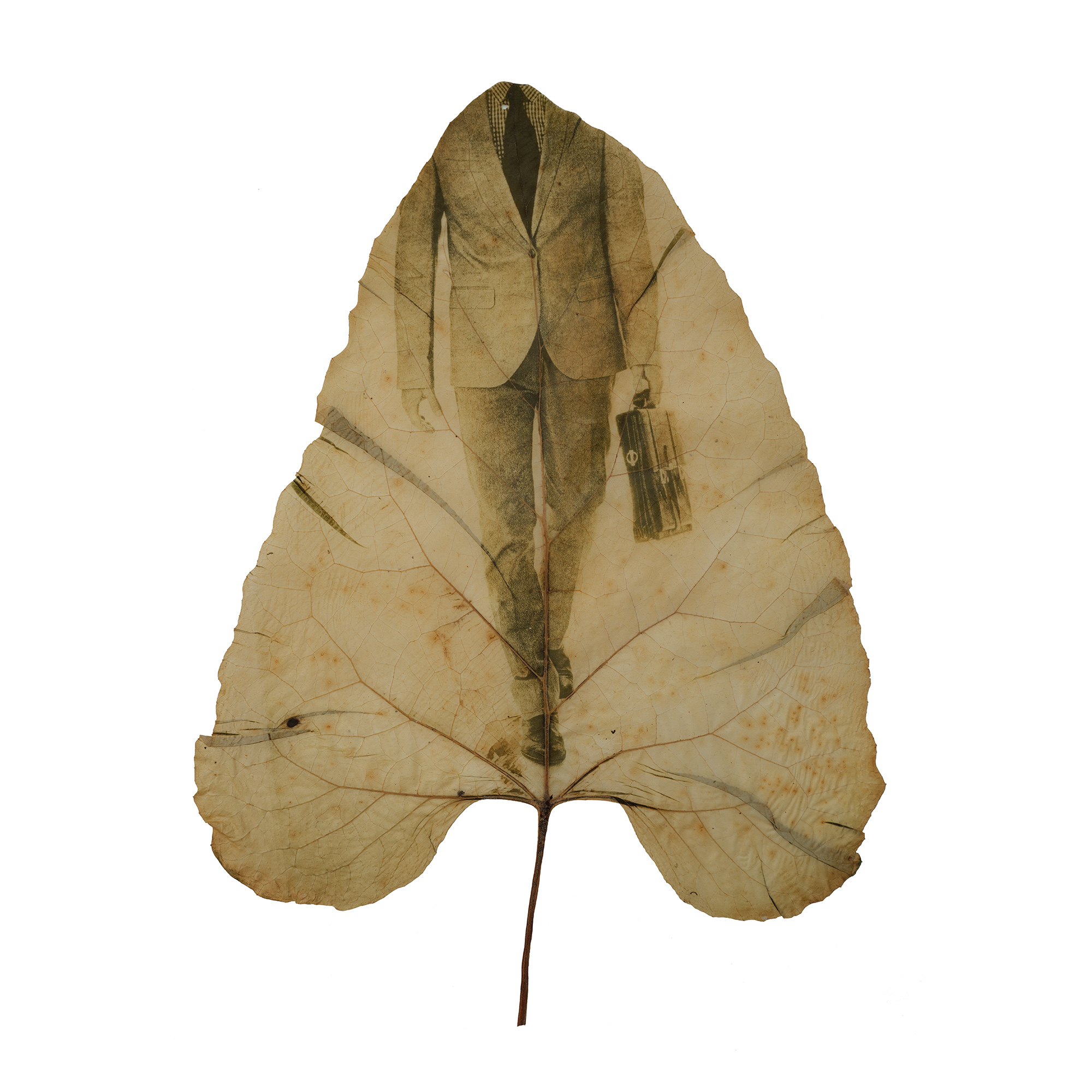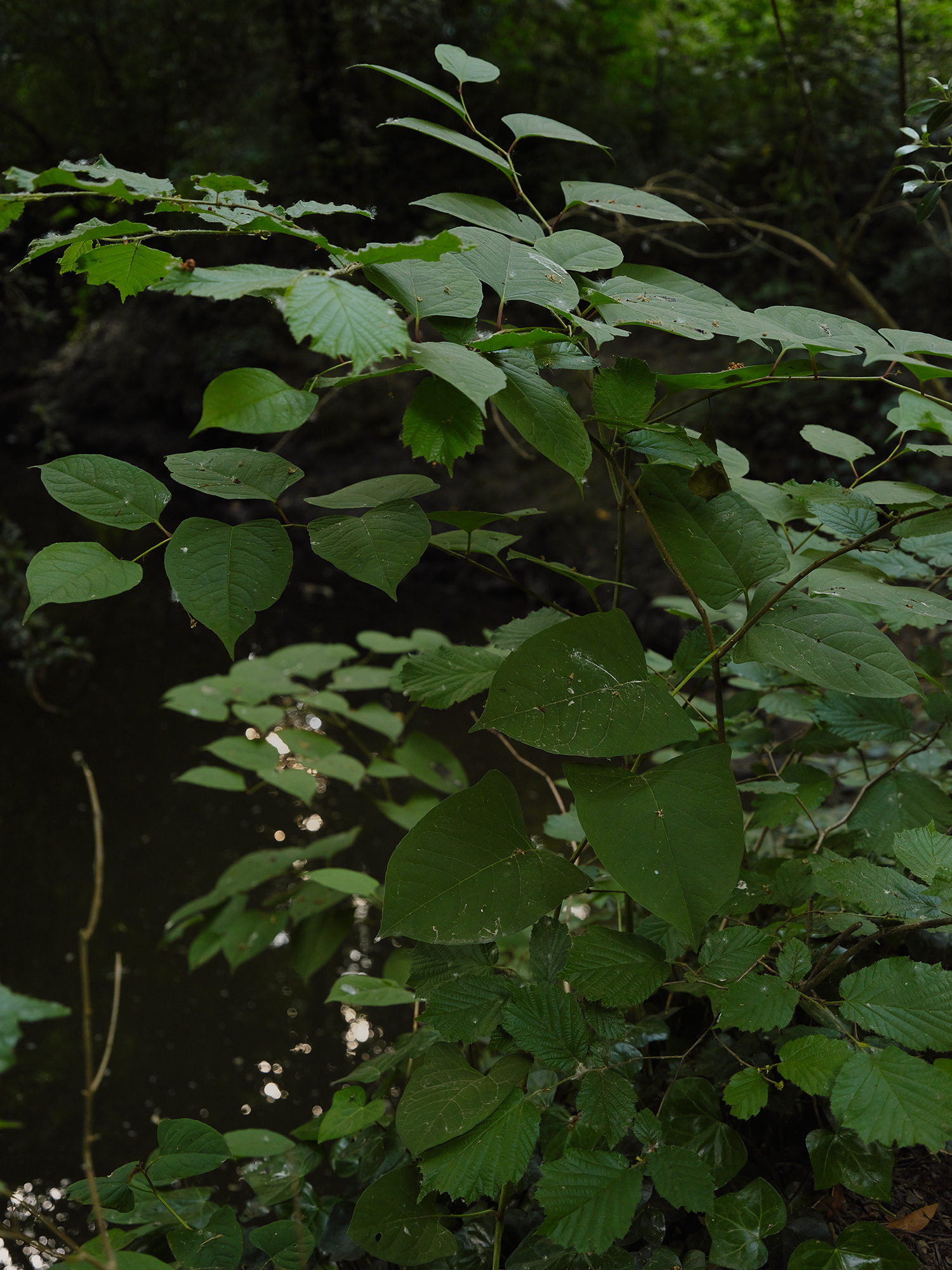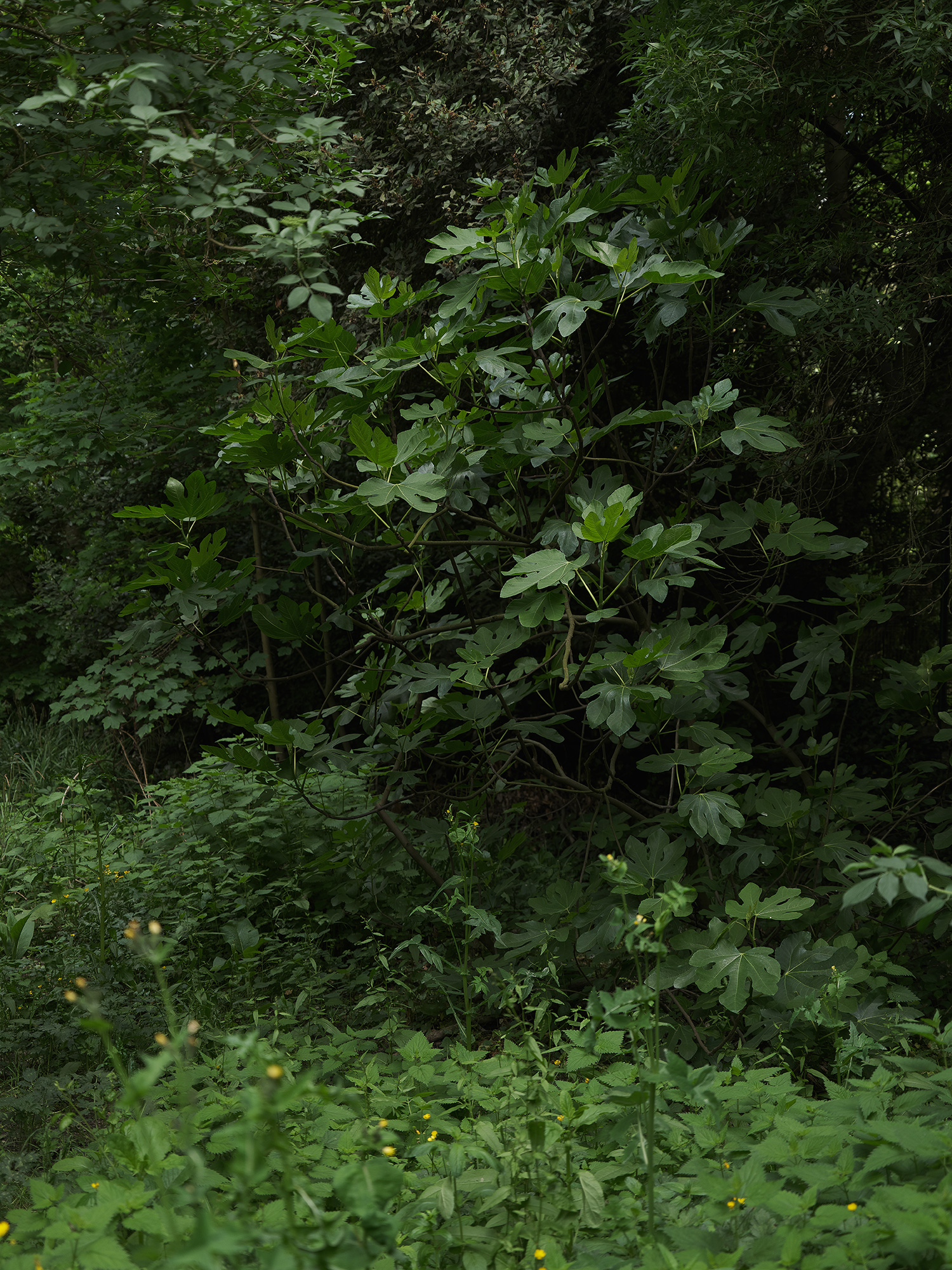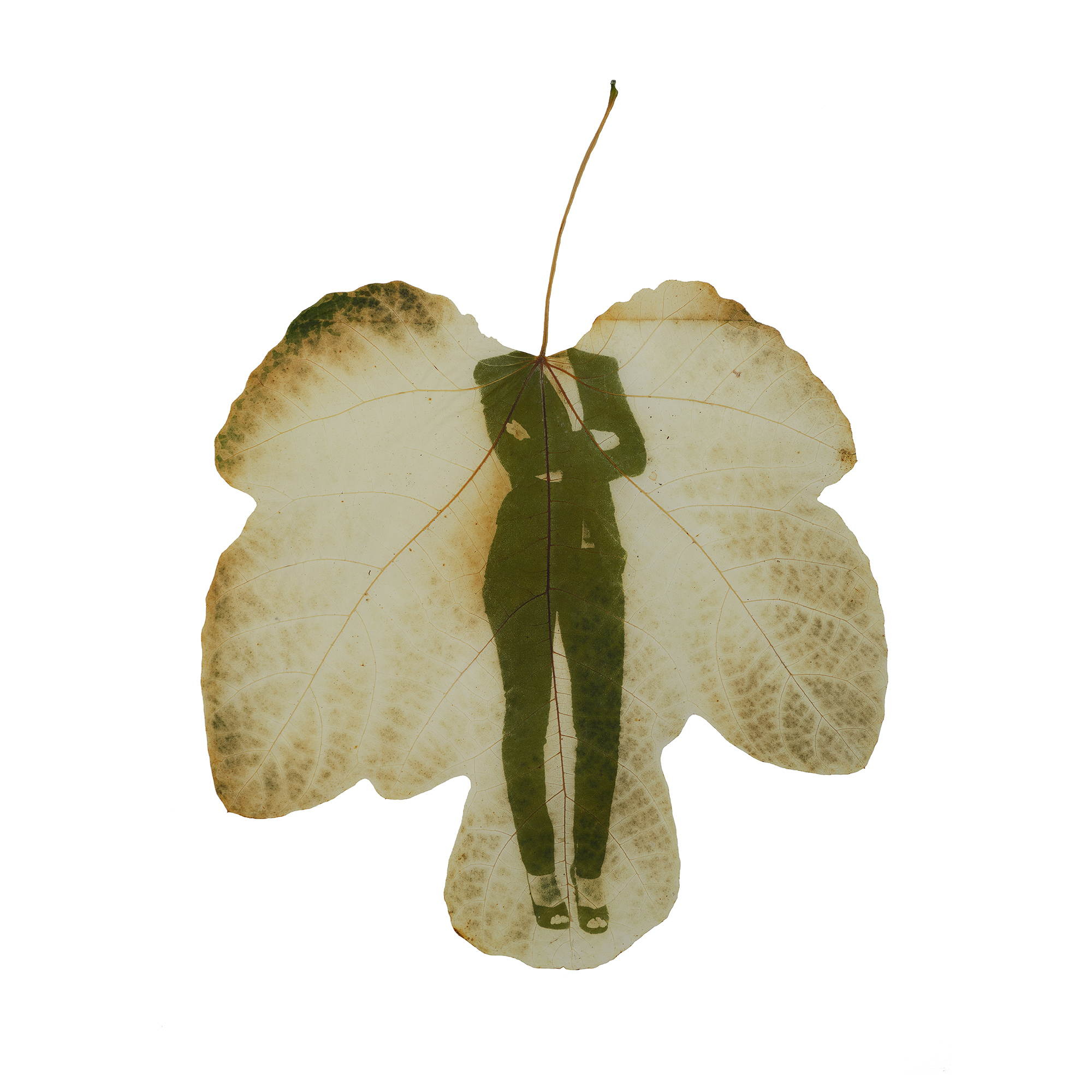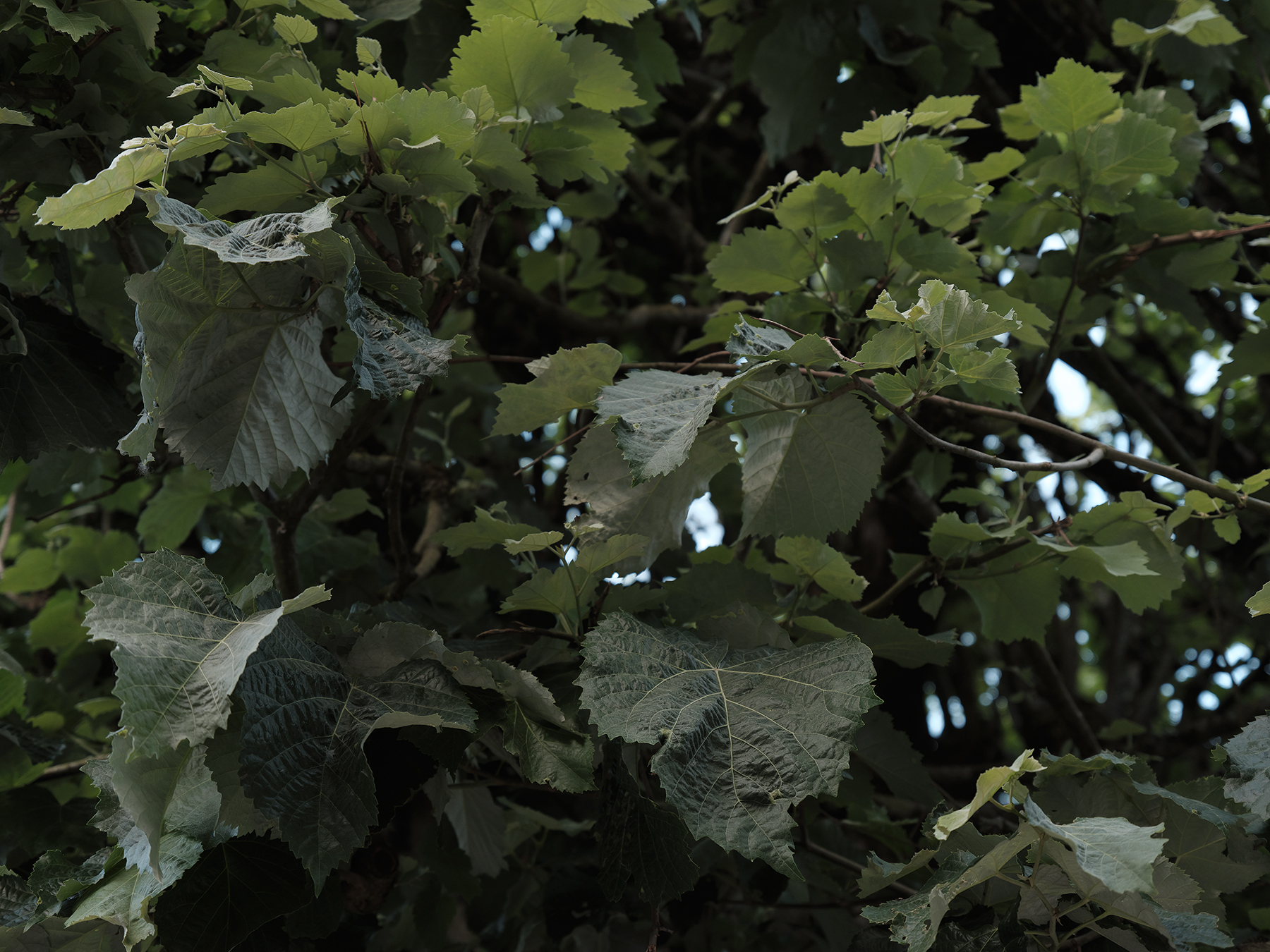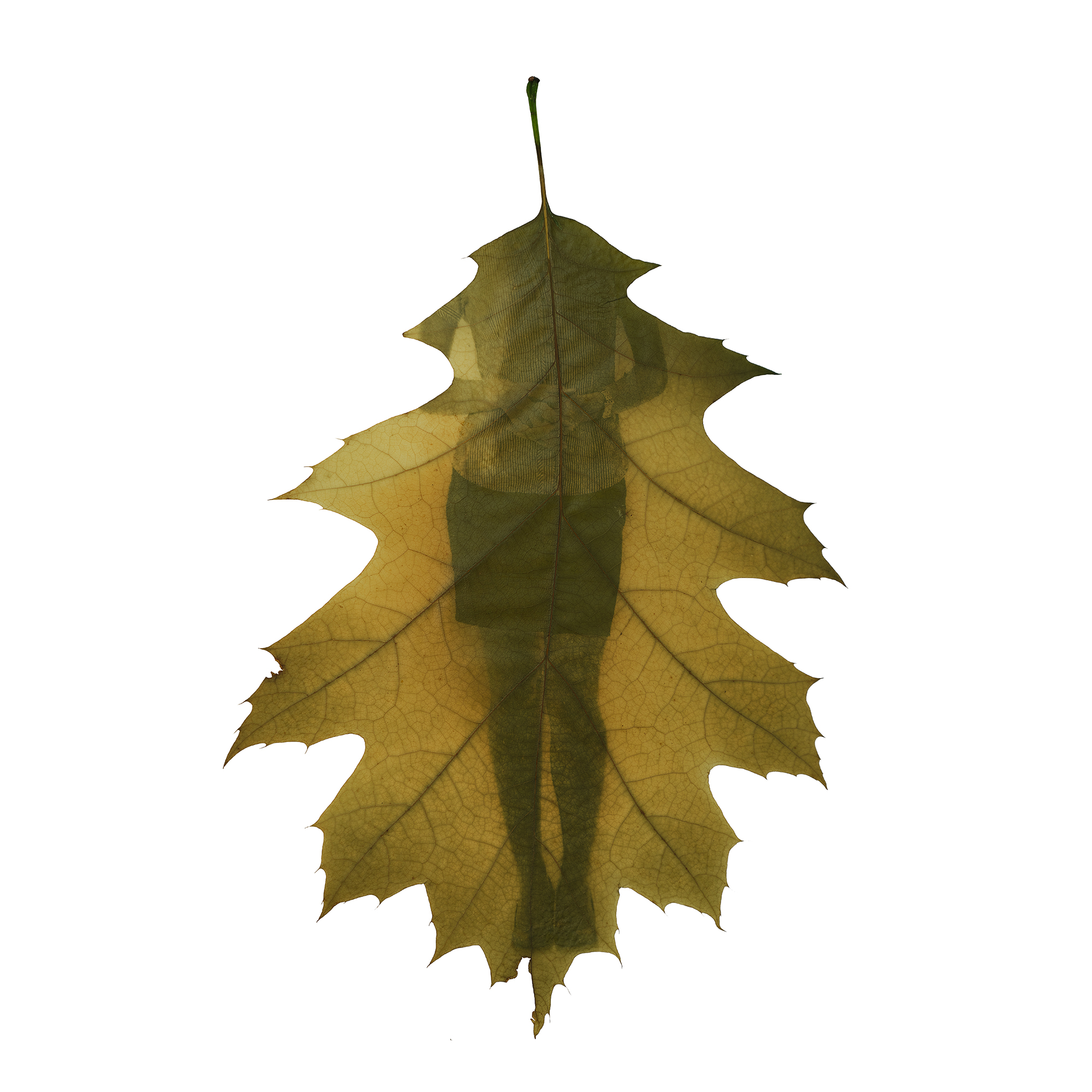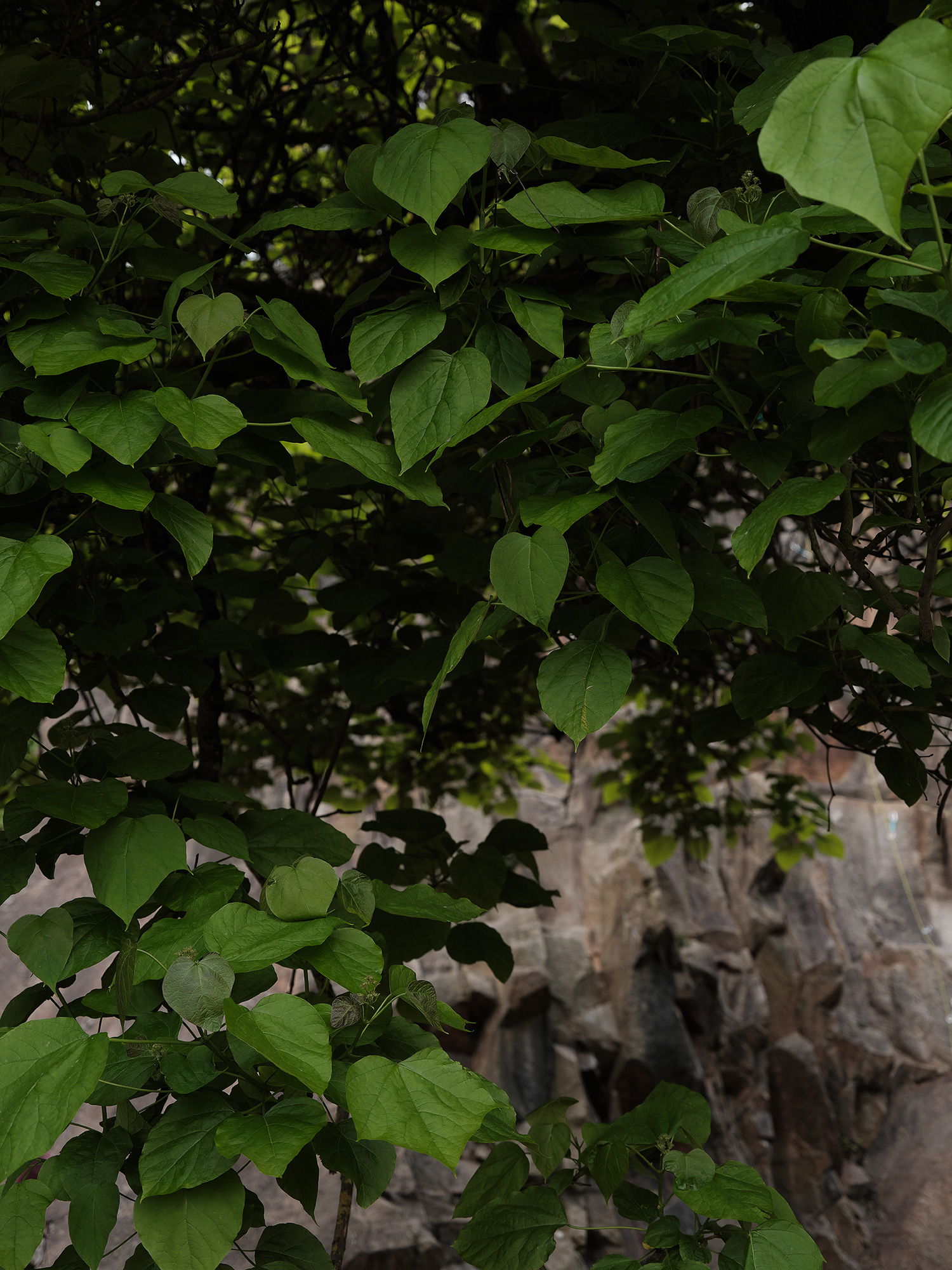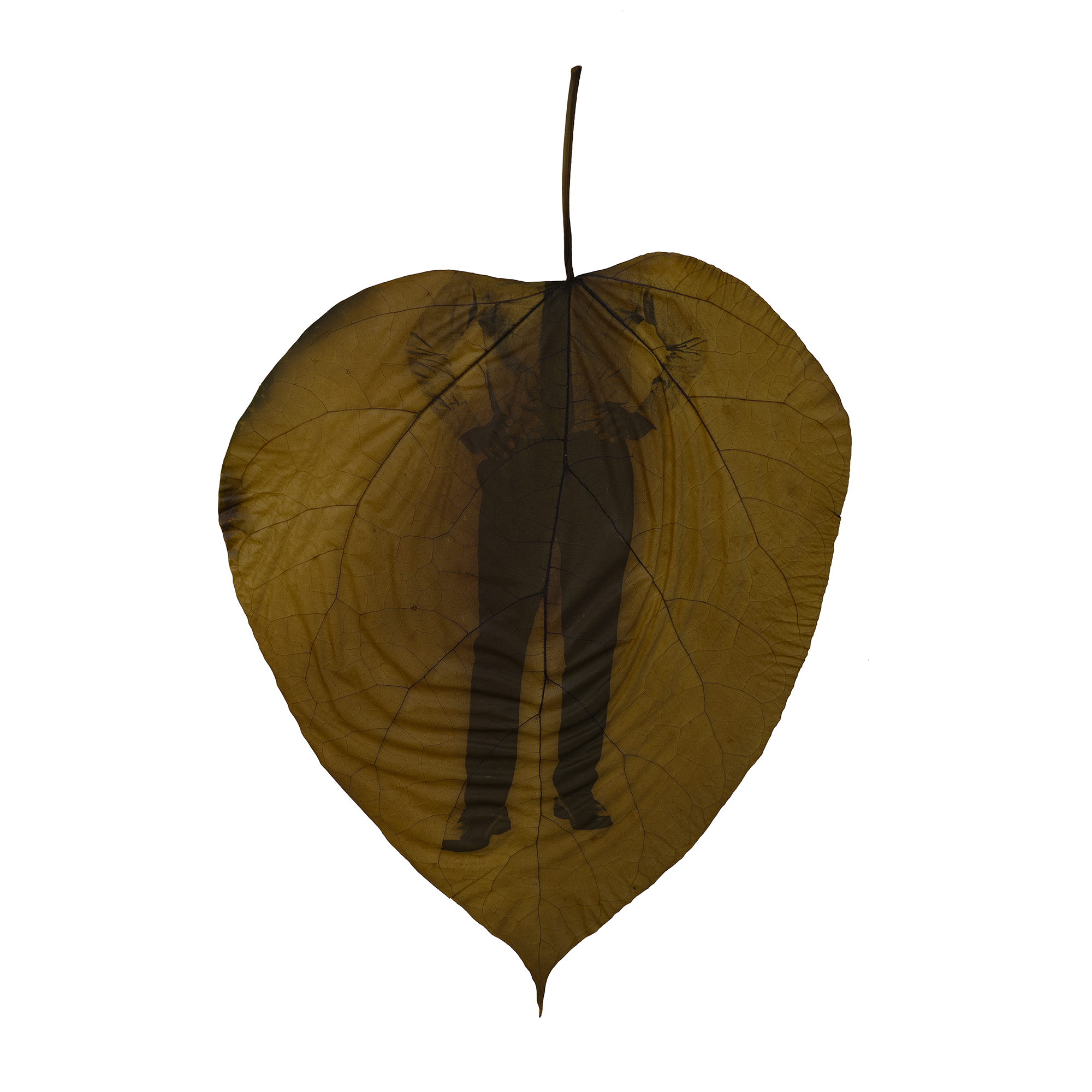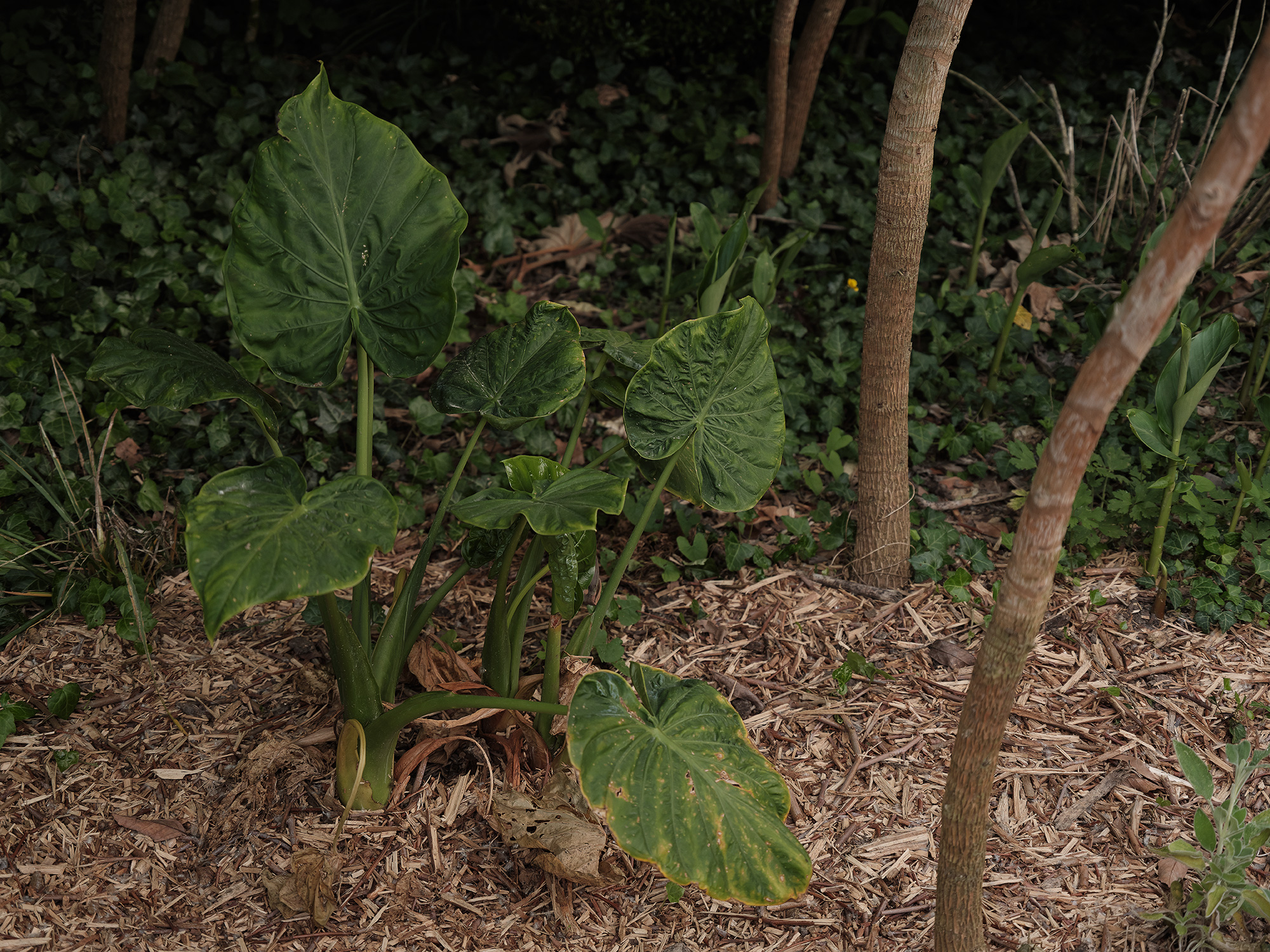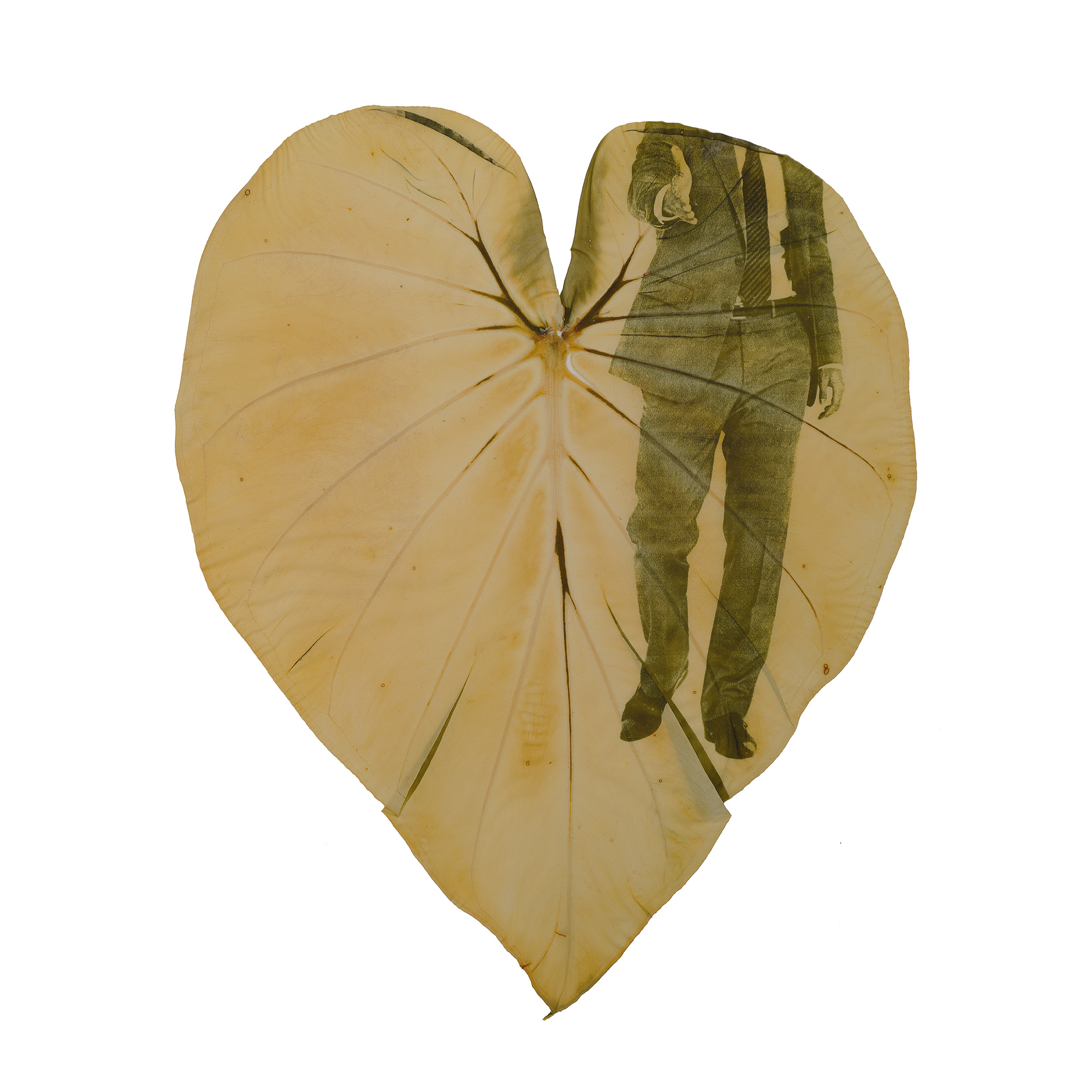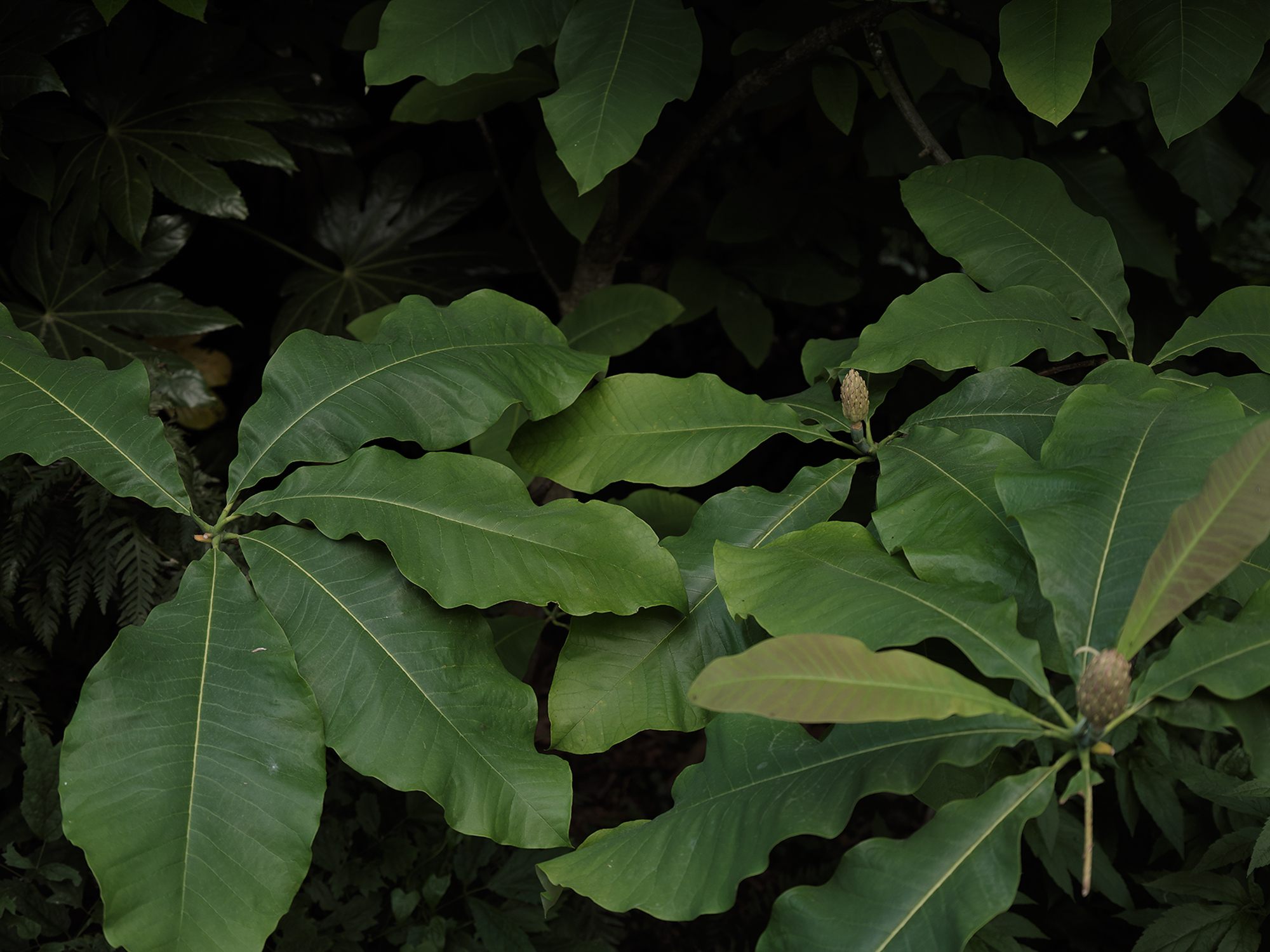« Homo œconomicus herbarium », 11 chlorophyll prints, bioresin, wood, 28x36x1.5cm & 15 photographs on fine art bamboo fibre paper, 66x86cm – 30x42cm -15x20cm / « Homo œconomicus herbarium », 11 impressions végétales, biorésine, bois, 28x36x1,5cm & 15 photographies sur papier fine art en fibres de bambou, 66x86cm – 30x42cm -15x20cm
EN/
« Homo œconomicus » (Latin for « economic man ») : theoretical representation of human behaviour, considered as a perfectly rational being. « Homo œconomicus herbarium » is a collection of artworks made up of chloro^hyll prints set in bioresin, and photographic documents to contextualise the gatherings. The collection includes a range of different types of leaves, on which, thanks to their natural photosensitivity, corporates are depicted posing with their faces out of focus. These image-objects are a memory of our times, evoking museum conservation practices as traces and fragments of an archaeology of the future. The herbarium is expanded as the artist wanders through nature, botanical gardens, and soon on expeditions abroad in his sailing boat, in search of large green leaves and sunlight. To introduce this new project, he took an interest in the plants near his home in Nantes, along the river La Chézine (Zola district) as well as in the Sainte Anne, Chantenay and city centre districts. FR/ « Homo œconomicus » (du latin « homme économique ») : représentation théorique du comportement de l’être humain, considéré comme un être agissant de manière parfaitement rationnelle. « Homo œconomicus herbarium » est une collection d’œuvres composée d’impressions végétales enchâssées dans de la biorésine, et de documents photographiques, pour contextualiser les cueillettes. La collection répertorie différents types de feuilles sur lesquelles sont dépeintes, grâce à leur photosensibilité naturelle, des corporates prenant la pose, les visages hors du champ. Mémoire de notre époque, ces images-objets évoquent les pratiques de conservation muséales, comme autant de traces, et de fragments issus d’une archéologie du futur. L’herbier est étoffé au fil des promenades de l’artiste dans la nature, dans des jardins botaniques, et bientôt lors d’expéditions à l’étranger avec son voilier, à la recherche de grandes feuilles vertes, et de soleil. Pour introduire ce nouveau projet, il s’est intéressé aux plantes près de chez lui, à Nantes, le long de la rivière la Chézine (quartier Zola), ainsi qu’à Sainte Anne, Chantenay et au centre ville.





















Exhibition views : Homo œconomicus herbarium (Nantes), Espace 18 gallery, with the support of Nantes City Council, june 2025

